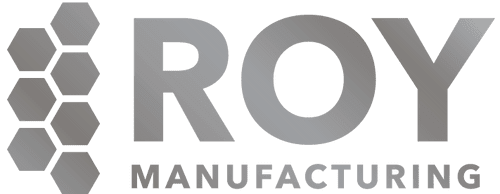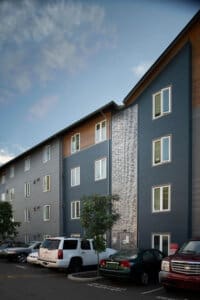Architectural Wall Cladding Solutions with Perforated Metal
Perforated metal wall cladding is a versatile and advantageous choice for architects, boasting a myriad of applications. This adaptable architectural product finds its place on facades, scrim walls, ceilings, guardrails, and more. Beyond its practical uses, architectural wall cladding offers a contemporary design aesthetic, exceptional mechanical stability, and strength. It serves as a robust shield against extreme temperatures, water absorption, wind, ultraviolet (UV) light, and pollution.
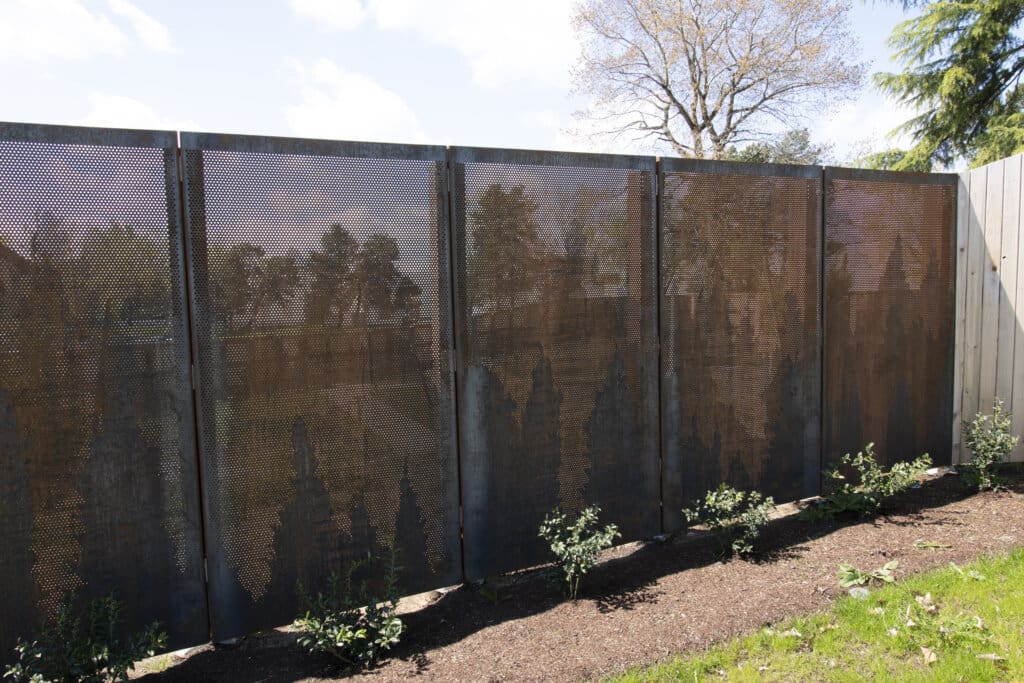
If you can dream it, Roy Manufacturing can make it. At our manufacturing facility, customizability takes center stage, allowing for tailored perforation options in terms of hole patterns, shapes, sizes, and images. This flexibility opens the door to virtually limitless design possibilities. Furthermore, the functionality of perforated metal extends to the control of air, heat, and sunlight entering the interior, addressing diverse architectural needs with practicality.
Notably, using perforated metal in architectural cladding aligns with sustainability goals and may contribute to LEED certification. Its capacity to be crafted from recycled materials enhances its eco-friendly profile. The open area percentage, hole sizes, and spacing of the perforations can be precisely adjusted to integrate seamlessly with any architectural design or requirement.
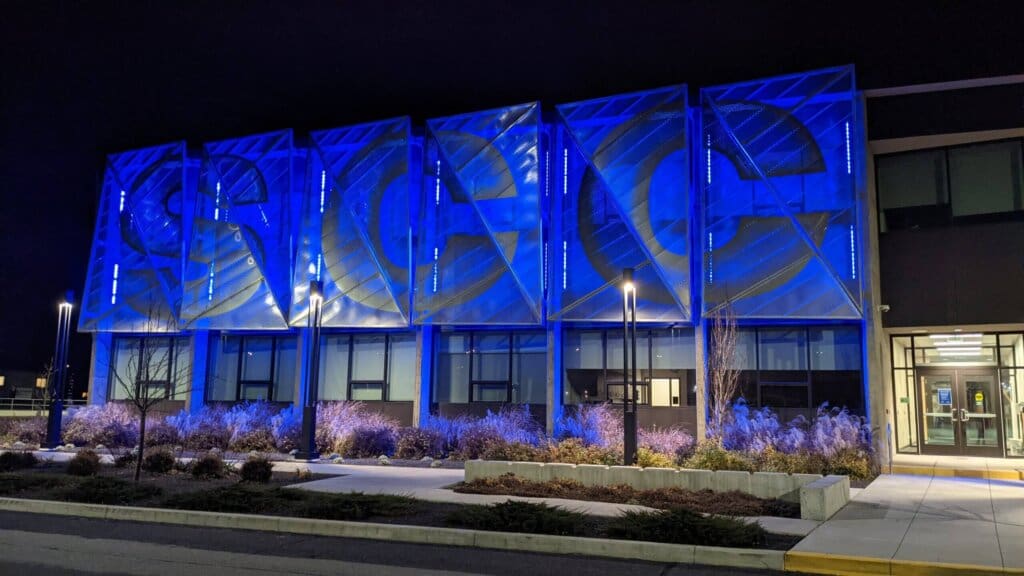
In essence, architectural wall cladding featuring perforated metals emerges as a dynamic and sustainable solution, enriching the visual appeal and functional aspects of a building’s exterior.
Metals Used for Architectural Wall Cladding
Our team will work with you to discover the right metal for your project. Many perforated metals are used for architectural wall cladding, each with unique characteristics and applications. Some common types of perforated metals used for architectural cladding include:
1. Aluminum: Aluminum is widely used for architectural applications due to its exceptional resistance to corrosion, which ensures endurance and a long lifespan. It is also known for its silvery finish, making it visually appealing as a decorative accent.
2. Titanium: Titanium is one of the strongest metals with an exceptionally high strength-to-weight ratio. It is 40% lighter than steel and 60% heavier than aluminum. Titanium has an oxide layer that protects it against corrosion, making it a durable choice for architectural cladding.
3. Stainless Steel: Stainless steel is valued for its strength, corrosion resistance, and aesthetic appeal. It is a versatile material that can be used for both decorative and practical applications in architectural cladding.
4. Other Metals: In addition to aluminum, titanium, and stainless steel, other metals such as carbon steel, brass, and copper are also used for perforated architectural cladding, each offering unique aesthetic and functional properties.
These different types of perforated metals provide architects and designers with a wide range of options to achieve their desired aesthetic, functional, and sustainability goals in architectural wall cladding.
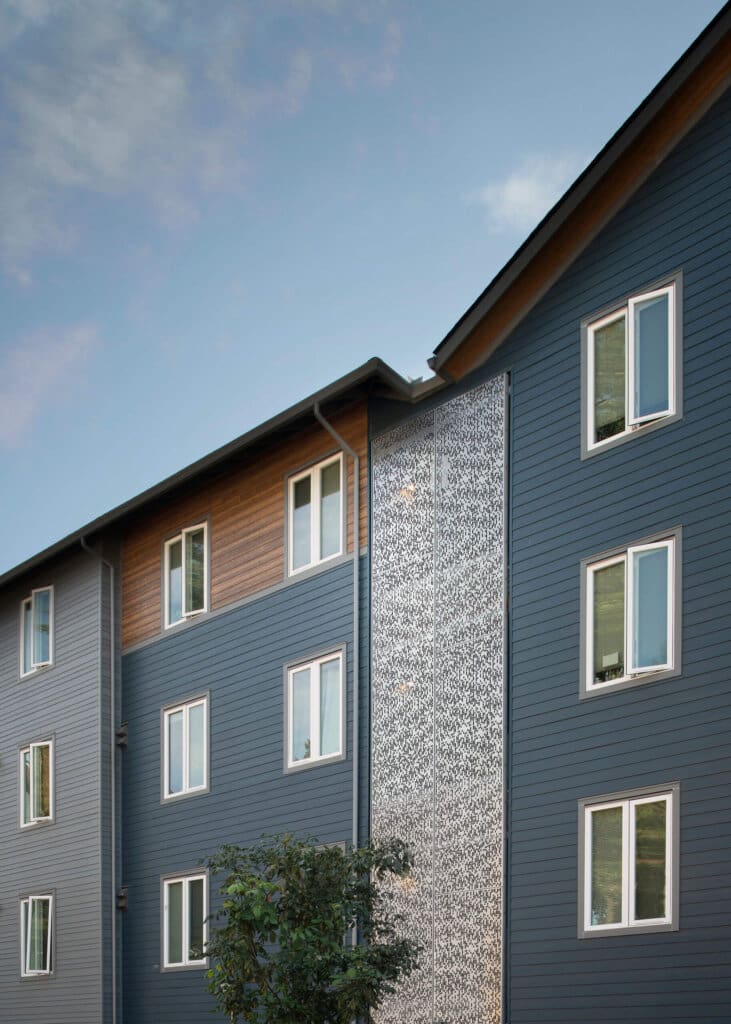
Benefits of Using Perforated Metal for Architectural Wall Cladding
Perforated metals offer several advantages for architectural wall cladding, making them popular for designers and architects. Some of the key benefits include:
1. Aesthetic Appeal: Perforated metals provide a unique, modern aesthetic that can complement any building. They come in various hole shapes, sizes, and geometric patterns, offering virtually endless design options to achieve a specific look. At Roy Manufacturing, we can create custom hole designs to turn a metal sheet into a fantastic work of art.
2. Light and Ventilation Control: Perforated metal sheets allow for more control over a building’s light and ventilation, helping to manage interior heat buildup from the sun and reducing the amount of indoor lighting required. Perforated metal offers a significant advantage by effectively deflecting heat buildup from the sun. This reduces strain on your HVAC system, requiring less effort to maintain a steady temperature, resulting in lower energy consumption. The use of perforated metal emerges as an efficient choice for temperature regulation. Moreover, the material’s ability to allow natural light into the building diminishes the reliance on artificial indoor lighting, further decreasing overall energy usage. This dual benefit of enhanced sunshade and improved ventilation has been demonstrated to lower building maintenance costs.
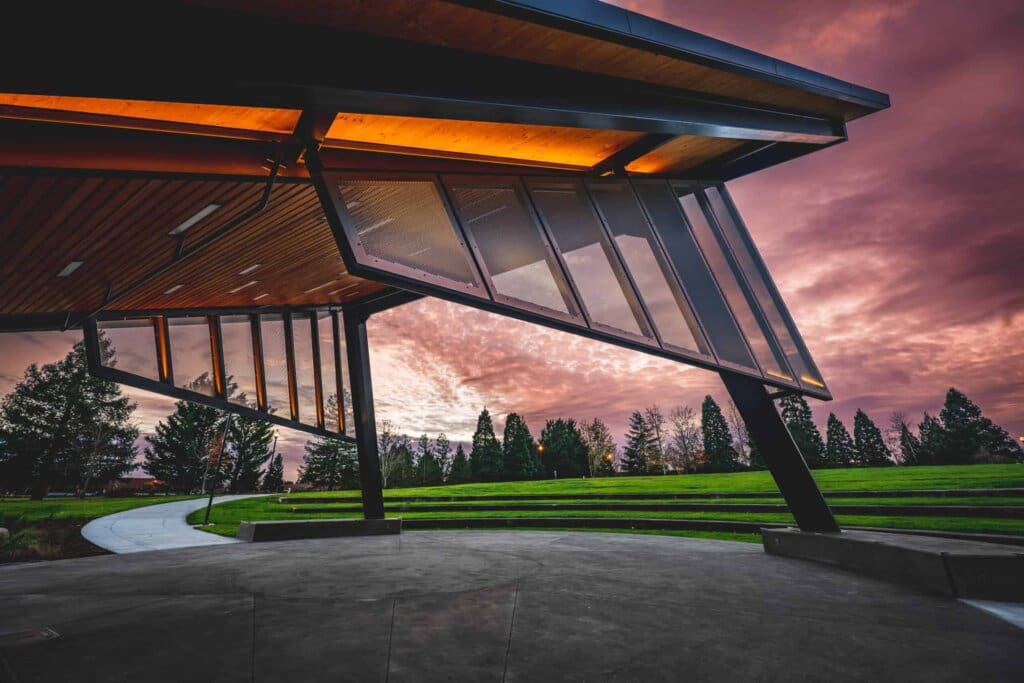
3. Acoustic Performance: Perforated metal is effective for diffusing sound, soundproofing, and reducing acoustic emissions, making it a practical choice for architectural applications where acoustic performance is important. When used on ceilings, perforated metal becomes an effective tool in preventing echoes. It serves as a protective covering for acoustical materials designed to absorb, reflect, or scatter sound in specific ways. The perforations allow sound waves to pass through seamlessly. Additionally, perforated metal can function as a selective sound absorber, fine-tuning to eliminate specific frequency bands.
4. Durability and Strength: Perforated metal is more durable than alternative building materials and provides enhanced structural support due to its high strength-to-weight ratio. It is also resistant to weather and corrosion, making it a long-lasting solution for architectural cladding.
5. Customization Options: Perforated metals offer a wide range of textures, finishes, and colors to match the overall architectural style. They can be cut to exact size and adjusted for freedom of alteration, providing architects with extensive customization options.
Perforated metals are valued for their aesthetic appeal, light and ventilation control, energy efficiency, acoustic performance, durability, and extensive customization options, making them a versatile and sustainable choice for architectural wall cladding.
Roy Manufacturing is your source for all perforated metal architectural solutions.
From railing inlays to decorative signage and architectural wall cladding, Roy Manufacturing has the technology and expertise to bring your blueprints to life. We’ve been working in the industry for over 60 years with a dedication to quality workmanship on spec and time. Contact us today to learn more, including our promise of a free, same-day quote and speedy production turnaround.
